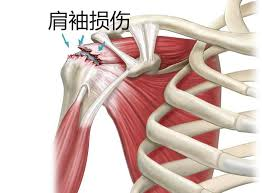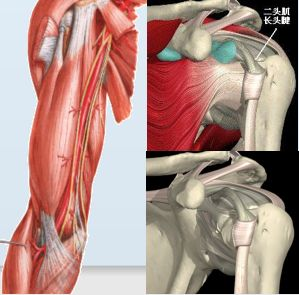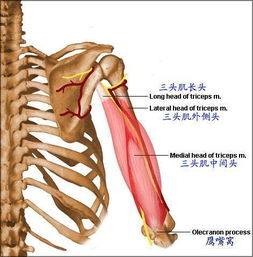Tendon rupture and defect are common diseases, mostly caused by injury or lesion, in order to restore the function of the limb, the ruptured or defective tendon must be repaired in time. Tendon suturing is a more complex and delicate surgical technique. Because the tendon is mainly composed of longitudinal fibers, the broken end is prone to splitting or suture elongation during suture. The suture is under some tension and remains until the tendon heals, and the choice of suture is also very important. Today, I will share with you 12 common tendon injuries and the principles, timing, methods and tendon fixation techniques of tendon sutures.
I.Cufftear
1.Pathogeny:
Chronic impingement injuries of the shoulder;
Trauma: excessive strain injury to the rotator cuff tendon or fall with the upper limb extended and braced on the ground, violently causing the humeral head to penetrate and tear the anterior superior part of the rotator cuff;
Medical cause: injury to the rotator cuff tendon due to excessive force during manual therapy;
2.Clinical feature:
Symptoms: Post-injury shoulder pain, tearing-like pain;
Signs: 60º~120º positive arc of pain sign; shoulder abduction and internal and external rotation resistance pain; pressure pain at the anterior border of the acromion and the greater tuberosity of the humerus;
3.Clinical typing:
Type I: No pain with general activity, pain when throwing or turning the shoulder. Examination is only for retro-arch pain;
Type II: In addition to pain when repeating the injured movement, there is rotator cuff resistance pain, and the general movement of the shoulder is normal.
Type III: more common, symptoms include shoulder pain and limitation of movement, and there is pressure and resistance pain on examination.
4.Rotator cuff tendon rupture:
① Complete rupture :
Symptoms : Severe localised pain at the time of injury, relief of pain after the injury, followed by a gradual increase in the level of pain.
Physical signs:Widespread pressure pain in the shoulder, sharp pain in the ruptured part of the tendon;
Often palpable fissure and abnormal bone rubbing sound;

Weakness or inability to abduct the upper arm to 90º on the affected side.
X-rays: Early stages usually have no abnormal changes;
Late visible humeral tuberosity osteosclerosis cystic degeneration or tendon ossification.
② Incomplete rupture: shoulder arthrography can help to confirm the diagnosis.
5. Identification of rotator cuff tendons with and without rupture
①1% procaine 10 ml pain point closure;
② Upper arm drop test.
II.Injory of the becips brachii long head tendon
1.Pathogeny:
Injury caused by repeated excessive range of shoulder rotation and forceful movement of the shoulder joint, causing repeated wear and tear of the tendon in the inter-nodal sulcus;
Injury caused by a sudden excessive pulling;
Others: aging, rotator cuff inflammation, subscapularis tendon stop injury, multiple localised seals, etc.
2.Clinical feature:
Tendonitis and/or tenosynovitis of the long head muscle of the biceps:
Symptoms: soreness and discomfort in the front of the shoulder , radiating up and down the deltoid or biceps.
Physical signs:
Inter-nodal sulcus and biceps long head tendon tenderness;
Localised striae may be palpable;
Positive upper arm abduction and posterior extension pain;
Positive Yergason's sign;
Limited range of motion of the shoulder joint.
Rupture of the tendon of the long head of the biceps:
Symptoms:
Those who rupture the tendon with severe degeneration: most often there is no obvious history of trauma or only minor injuries, and the symptoms are not obvious;
Those with rupture caused by strong contraction of the biceps against resistance: the patient has a tearing sensation or hears a tearing sound in the shoulder, and shoulder pain is obvious and radiates to the front of the upper arm.
Physical signs:
Swelling, ecchymosis and tenderness at the inter-nodal sulcus;
Inability to flex the elbow or decreased elbow flexion;
Asymmetry in the shape of the biceps muscle on both sides during forceful contraction;
Abnormal position of the biceps muscle belly on the affected side, which may move down to the lower 1/3 of the upper arm;
The affected side has lower muscle tone than the healthy side, and the muscle belly is more inflated than the opposite side during forceful contraction.
X-ray film: generally no abnormal changes.

III.Injory of the becips brachii tendon
1.Etiology:
Enthesiopathy of the triceps brachii tendon (enthesiopathy of the triceps brachii tendon ): the triceps brachii tendon is repeatedly pulled .
Rupture of the triceps brachii tendon (rupture of the triceps brachii tendon ): the triceps brachii tendon is torn off by a sudden and violent indirect external force.
2.Clinical manifestations:
Triceps tendon endopathy:
Symptoms: pain in the back of the shoulder that may radiate to the deltoid, local numbness or other sensory abnormalities;
Signs:
Pressure pain in the long head tendon of the triceps brachii at the beginning of the inferior border of the scapular glenoid at the outer table of the upper arm;
Positive elbow extension resistive pain; triceps pain induced by passive extreme pronation of the upper arm.
X-ray: sometimes there is a hyperdense shadow at the beginning of the triceps muscle.
Triceps tendon rupture:
Symptoms:
Much rattling behind the elbow at the time of injury;
Pain and swelling at the site of the injury;
Weakness in elbow extension or inability to actively extend the elbow fully;
Pain aggravated by resistance to elbow extension.

Physical signs:
Depression or even defect can be felt above the ulnar humerus, and the severed end of the triceps tendon can be palpated;
Sharp tenderness at the ulnar humerus node;
Positive elbow extension test against gravity.
X-ray film:
A linear avulsion fracture is seen about 1 cm above the ulnar humerus;
Bone defects are seen in the ulnar tuberosity.
Post time: Jul-08-2024










